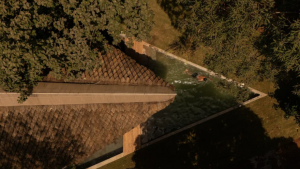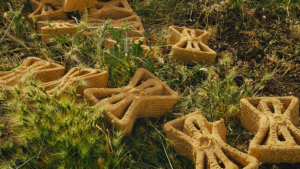We take a look at some of the latest contemporary designs and unconventional forms employed in the construction of bridges.

Lucky Knot Bridge, China
Inspired by the ancient art of Chinese knotting, the Lucky Knot Bridge in Changsha, China spans the width of the Dragon King Harbour River, swooping in what appears to be an infinite loop. Designed by Dutch architecture firm Next Architects, the bright red (one that denotes good luck and happiness in Chinese culture) work of art is essentially three bridges woven into one. With public engagement top of mind in its design, the structure features multiple landing platforms and cutouts, as well many swooping levels that connect to different heights.
“We refer to it as a Mobius ring,” says Michel Schreinemachers, a partner at Next Architects told Wired. “It’s a never ending shape.”

The Zaligebrug, The Netherlands
Well known for their unorthodox designs, Next Architects was also responsible for The Zaligebrug (Citadelbrug) in Nijmegen. Located in the flood lands of The Netherlands, the bridge is partially submerged in water for a few days a year. Part of a nationwide project started to rearrange the floodplains and reduce the risk of flooding, the structure includes stepping stones, terraces and benches which serve to enhance the recreational quality of the bridge.

Vlotwatering bridge, The Netherlands
Another project from Next Architects is the Vlotwatering bridge in the Dutch town of Monster. Known as ‘the bat bridge’, the curvy, tasteful structure is fashioned from ruddy bricks and planks of wood. Built across an important pathway used by the town’s substantial bat population, the bat bridge features planks that form slats spaced precisely wide enough for bats. Made from concrete it provides a suitable environment for their winter hibernation while the brick provides cooler summer nesting spots for the nocturnal creatures.

Moses Bridge, The Netherlands
Certainly amongst the most creative when it comes to architectural design, the Moses bridge is another creation from the Dutch. Invisible to the naked eye from afar, this incredible “sunken” bridge provides a romantic pathway to access a 17th century Dutch fort. Designed by RO & AD Architects, the Moses Bridge literally parts the waters that surround the fort, allowing pedestrians to pass through. The structure is made from sustainable Accsys Technologies Accoya wood, which is both FSC and PEFC certified.
Beersheba Station Bridge (Israel)
Featuring arches that create the shape of two eyes, the Bar Orian Architects designed Beersheba station bridge in Israel is a 210-metre-long bridge traverses a series of railway tracks. Designed with an expressive structure that is left visible rather than being concealed behind cladding, it creates a protected space that features undulating twists and turns.

Zhangjiajie Grand Canyon Glass Bridge, China
Though it recently temporarily closed down, no list of unorthodox bridge design would be complete without including the 430-metre-long glass bridge in China. Shortly after its completion, it was forced to close just 13 days after opening – though this was simply due to the overwhelming number of visitors who stormed the location. Designed by Tel Aviv architect Haim Dotan, the Zhangjiajie Grand Canyon Glass Bridge is believed to be the world's longest and highest glass pedestrian bridge (it spans a 300-metre-deep canyon in China's Zhangjiajie National Forest Park).






